Bangkok ShoppingPrepared by Harold Stephens
Travel Correspondent for Thai Airways International
There is no denying it, Bangkok has great shopping. In fact, Bangkok itself is a mega shopping plaza. Maybe even the world’s biggest. Everywhere you turn, it’s selling and buying. What Bangkok has to offer is mind boggling.
Let’s take a look at Bangkok's modern, multi-storey shopping malls. Shall we start with one of the biggest, CentralWorld Shopping Complex with 550,000 square metres of retail space and a total area size of 830,000 square metres, making it 30% larger than any other shopping centre in central Bangkok,
Or what about the oldest, Siam Center Bangkok, constructed in 1976. Perhaps dwarfed by the bigger and flashier malls but still a favorite of many shoppers. Speaking of old, what about a mall that exudes old world charm that we find in Peninsula Plaza situated between the Erawan Mall and Four Seasons Hotel.
And then there is the MBK, always so busy it causes traffic jams at the intersection. There’s the Emporium, trendy Siam Discovery and the upscale Siam Paragon. And we can’t miss All Seasons Place with its two towers, one of which leads into The Conrad Hotel.
I mentioned CentralWorld being one of the biggest, but how about the biggest mall of them all––Seacon Square. Opened in 1994, it’s the size of 96 football fields and has a 38-lane bowling alley, a rollerblading rink, mini-golf and amusement park and a 14-theatre multiplex cinema.
And who these days isn’t interested in DVD's, MP3 CD's and computers and all the latest electronic gadgets on the market? For these travellers come to Bangkok solely to visit Pantip Plaza, the IT Mall that is a multi storey complex.
The list goes on and on. Whatever the name, these malls are where you'll find the city's finest fashion stores, global brands, book shops, specialty stores, accessories stands and all kinds of luxury designer lifestyle goods. But remember, the malls are only a small segment of shopping delights in Bangkok. There are streets for shopping, like Silom and Sukhimvit Road, to name but two. And, of course, there are weekend markets and night bazaars. One in which you can get lost for days and never find your way out is Chattuchak. That’s on weekends. For every night shopping there’s the Night Bazaar. But for the Night Bazaar who knows. By the time this is in print, it may be closed. The property developers have been threatening to close the place down and build a shopping mall.
For those like to wander around for hours on end looking for up market antiques and find art there’s River City. The four storey complex is an experience if nothing else.
At night when most cities begin closing up, Bangkok streets become alive with activities. Portable shopping carts appear out of nowhere and set up business right on main avenues and busy thoroughfares. If that isn’t enough, street vendors carrying their wears by hand or over their shoulders parade along the sidewalks in front of the shops doing their thing.
All this shopping happens in Bangkok, day and night. But the point I want to make is why Bangkok? What makes Bangkok different than other large city around the world? What is its secret?
The truth it is in part Thai culture. Selling is in every Thais’ blood. The other is tradition that has been handed down from century to century. We have to go back to old Siam to see how the pattern was formed, back to days even before Sukhothai. The geographic position of the kingdom placed it on the trade routes of the world. Siam became the dropping of point where goods were exchanged. Siam was a warehouse of goods where they were bought and sold.
The tradition of selling and buying runs deep. When reading through history of Siam I thought it rather odd that armies going to battle, some with a tens of thousands of elephants, had in close pursuit behind them another arm of camp followers. It appears soldiers were not issued uniforms of weapon, nor were they provided with food. They were paid in hard cash and it was up to them to buy their supplies and food, and thus came the camp followers with wares and services to sell.
Old traditions just don’t go away.
The buying and selling continued when Europeans appeared on the scene. When Europe tasted the spices of the East, felt the fine silks of India and learned of the might of the gunpowder of China, Siam as the commercial centre grew and progressed. Ayutthaya became the center of trade and commerce. First it was overland along the Silk Road, a route that stretched some 8,500 kilometers from the shores of the Mediterranean to the ancient heartlands of the East, through the territories of some of the great empires in world history—Persian, Arabic, Indian, Turkic, Tibetan and Siam.
Hazardous, costly, painstakingly slow, there had to be a better trade route than the one that existed between East and West. Perhaps not by land but by sea. And so from Europe set out the explorers, daring seafarers like Magellan and Vasco Da Gama. Their discoveries in the 1500s opened up new sea routes to the Far East and, with these new sea-lanes, trade prospered. The demand in Europe for Eastern goods became even greater than ever before.
And here at the centre stood the Kingdom of Siam, with its capital at Ayutthaya, like a glittering jewel, lying far up a river as London is to the Thames and Paris to the Seine.
Ayutthaya was everything that Europeans envisioned. They were fascinated by the splendor of the city, but it was not so much by the temples and glitter, for that they expected, as much as it was the trading that was going on, trading in the shops, in the alleyways, in the streets, in the open. Every direction they looked people were either buying or selling. The entire city was a grand bizarre shopping center. Everyone, man, woman and child were engaged in trade in one form or another. Never had Europeans seen any thing like it, neither in the streets of Calicut nor in the bazaars in Arab ports of the Middle East, and even in the bustling ports back in Genoa to Venice on the continent. None could compare to Ayutthaya. It was shopping unequalled anywhere in the world. The open fronted shops were bulging with wares. Bolts of fine silks from China, priceless porcelains from Japan, bags of tea from the hills, sacks of spices that rendered magnificent aromas, scented wood, elephant tusks in bundles, and all those strange things they did not even know. There were weaved mats and carpets, and brass pots and trays, candlestick holders and hanging oil lamps.
And so it was, Chinese merchants came down from the Chinese mainland, Arab traders form Muscat and Dubai, and Muslim immigrants from Java and other islands in the Dutch East Indies, all eager to engage in trade, and nothing has changed. Maybe the elephants' tusks have disappeared but they have been replaced with merchandise of our modern world.
And what else has not changed is the spirit of the Thai people. They are merchants at heart. The malls of Bangkok, the shopping streets, the night bazaars, they are all evidence of that tradition. If you want to know more about early trade and shopping in old Thailand, read my book For the Love of Siam.
QUESTIONS AND ANSWERSQ. Dear Mr. Stephens. Your readers might be interest in this retreat on Bali. While most cultures celebrate New Years with great parties, Bali opens its New Year quite differently—with a Day of Silence, or Nyepi. Although Nyepi is primarily a Hindu holiday, non-Hindu residents of Bali observe the day of silence as well, out of respect for their fellow citizens. Even tourists are not exempt; although free to do as they wish inside their hotels, no one is allowed onto the beaches or streets, and the only airport in Bali remains closed for the entire day. So what better way to celebrate the New Year in Bali by staying at Anantara Seminyak Bali. ––Mark Thomson, Assistant Director of Public Relations, Anantara Hotels, Resorts & Spas|
A. Dear Mr. Thompson. Thank you and I will pass it on top my readers. —HS
Harold Stephens
Bangkok
E-mail: ROH Weekly Travel (hstephens_1@yahoo.com)
Note: The article is the personal view of the writer and does not necessarily reflect the view of Thai Airways International Public Company Limited. | 
River City for antiques | | 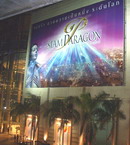
Paragon, one of the biggest | | 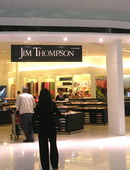
Jim Thompson silk all over town | | 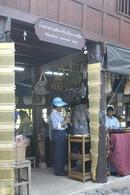
Even Ancient City has shopping | | 
Chatchusak, the biggest weekend market | | 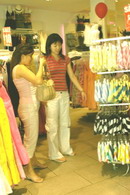
Shopping made for women | | 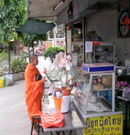
Even monks do it—shop | | 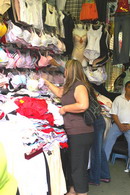
How about that, bras any size | | 
You can get lost in some old shops | | 
Anything you want at Chatchusak | | 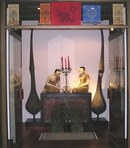
At River City you can look and not shop | | 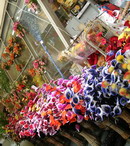
How can you resist, even flowers | | 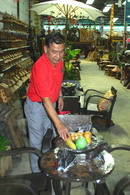
Shop owners take pride in their shops | | 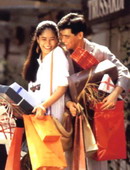
This can be you, shopping in Bangkok |
|





